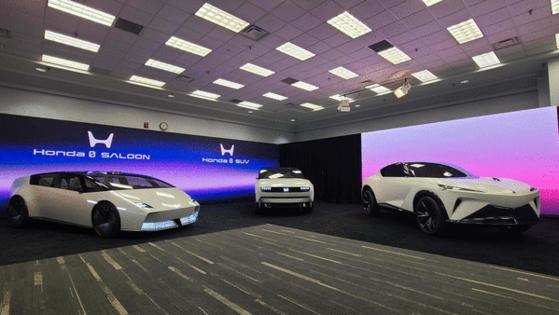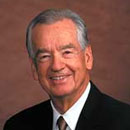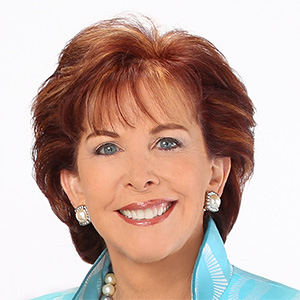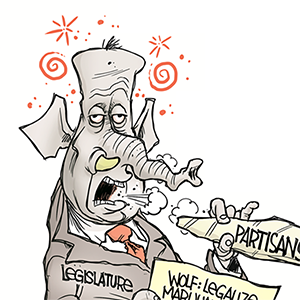Henry Payne: Honda forges ahead with first Ohio-made EVs while slowing transition
Published in Business News
Honda 2.0 is leaning into electric vehicles, while keeping all options open.
Last week at the exclusive Quail Motoring Gathering at California’s Monterey Car Week, Honda Motor Co.’s luxury brand, Acura, introduced the long-anticipated RSX Prototype — the near-production version of the first, in-house-manufactured electric vehicle to be produced at Honda’s so-called EV Hub in Ohio 160 miles south of Detroit.
The RSX’s launch at EV Hub is an initial salvo in Honda’s Second Founding — call it Honda 2.0 — a historic shift to abandon internal combustion engine production by 2040. But with EV sales growth stalled in the United States and political parties split on regulatory policy, the flexibility of the Marysville manufacturing line to deliver everything from EVs to gas-electric hybrids to ICE vehicles may be Honda 2.0’s most significant innovation.
“A lot of companies like GM, Volvo and Alfa Romeo made promises that they were going all EV and now they are all reassessing and backtracking — including Honda,” said veteran auto analyst Karl Brauer of iSeeCars.com. “Watch what Honda does, not what it says. The fact that they are building flexible production lines is instructive.”
Initially scheduled for production at the end of this year, the RSX won’t roll off the Ohio line until the second half of 2026. It is in pre-production along with the Sony Afeela EV, the entertainment giant’s first, six-figure, semi-autonomous, video-immersive EV, which Honda is manufacturing on the same platform. Those EVs will be followed by the first of Honda’s radically-different 0 Series (zero for zero-emission battery drivetrains) sedan and SUV electric models based on the Saloon Prototype and SUV Prototype that debuted at the 2025 Consumer Electronics Show.
Looking to the end of the decade, however, Honda is cutting its investment in EVs by 30%. CEO Toshihiro Mibe told a press conference in May that Honda had reduced planned investment in electrification and software through the 2030 to 7 trillion yen ($48.4 billion) from 10 trillion yen previously.
The high-styled Acura RSX was unveiled at Quail alongside exotic concepts like the Chevrolet Corvette CX/CX.R Hybrid, Lamborghini Fenomeno and Ford Mustang GTD Liquid Carbon. It struggled to get attention on the Quail lawn.
“There used to be anticipation for new EV reveals, but interest in EVs is fading,” said analyst Braier after the electric market flat-lined at a 7.4% share in the first half of 2025. “We hit peak EV even before the 2024 election and now it will be harder for EVs to sell without customer incentives to buy and manufacturer incentives to build.”
Given the average EV sales price of $56K in July, the EV market has largely been the domain of premium brands like Tesla (which owns 44% of the EV market), GMC and Mercedes targeting affluent customers with multi-car garages. Even mainstream EVs from Kia and Chevrolet cost $5-10K more than equivalent ICE vehicles. With its upscale design and premium features like back-up power for homeowners, proprietary ASIMO operating system and Brembo rakes, the Acura RSX is aimed at an affluent audience.
The ASIMO system targets Tesla with a powerful CPU controlling vehicle functions and hands-free driving capability.
"The dramatic styling of our Acura RSX Prototype demonstrates that it's not just a new EV, but a compelling all-new Acura model," said Lance Woelfer, vice president of auto sales for American Honda. "RSX will deliver on nearly four decades of Acura Precision Crafted Performance brand DNA with appealing design and cutting-edge technology."
Its EV drivetrain aside, the RSX Prototype is a familiar evolution of the brand's Diamond Pentagon design language, with full-width rear taillights that are an homage to the second-generation, 2016-2022 NSX hybrid supercar.
More telling of Honda’s dramatic, Second Founding shift are the 0 Series cars, which are built on the same Honda EV platform as the RSX but are a departure from the evolutionary, ICE designs that Honda cultivated over the last 50 years to make vehicles like the Civic, Accord and CR-V household names. Honda’s first EV, the midsized Prologue SUV, is based on GM’s Ultium EV platform with sales at about 15% of its Pilot-Passport ICE stablemates.
The 0 Series Saloon Prototype looks like a Lamborghini sedan, while the square-backed SUV Prototype looks like something out of the sci-fi move "Blade Runner." A camouflaged version of the SUV — presumed pre-production — was paraded at the April Formula One Japanese Grand Prix with star Red Bull-Honda F1 driver Max Verstappen behind the wheel.
Entertainment giant Sony has contracted with Honda to make its first car, the Afeela, on the EV platform; it’s scheduled to hit the market before the RSX next year. Pre-production builds of the $102,900 Afeela Signature are underway in Ohio. Designed as a rolling showcase for Sony audio-visual products on 21-inch wheels, the Afeela features an immersive rear entertainment center and a center camera monitoring system.
“These are crazy-looking, low-volume cars,” Brauer said of the Afeela and 0 Series products. “They feel like vanity projects.”
He points instead to Honda projections that 20% of its sales will be EV by 2030 (up from 2% today) rather than the previously targeted 30% — and that Honda will prioritize hybrid models by launching 13 next-gen hybrids by 2031 (up from three today).
Built on the EV Hub’s flexible assembly line, hybrids fit Honda’s more traditional, evolutionary approach to vehicle development, Brauer said. It's an evolution that fellow Japanese automaker and U.S. sales leader Toyota has adopted in hybridizing its full U.S. lineup.
“Honda built its reputation on making great drivetrains, but Toyota has smoked them on hybrids,” Brauer said. “Hybrid technology has evolved, using regeneration, to make ICEs better, just like carburetor and fuel-injection advances before it.”
EVs, the iSeeCars analyst continued, “are a totally different prospect compared to hybrids which have access to existing gas infrastructure and have no range anxiety. Go pure EV and you haven’t evolved, you’ve made a leap to another world.”
Undergirding the Second Founding’s leap to electrification, Honda has been outspoken in its view that the automobile should be a driver of societal change. “The Paris Agreement aims to limit the global average temperature rise to 1.5°C above pre-industrial levels by reducing CO₂ emissions,” said the brand of the controversial agreement that has split American political parties. “Honda supports the Paris Agreement and engages in advocacy activities, such as influencing public policy.”
The RSX press release emphasizes that “in support of the company's global carbon neutrality goals, RSX can be used as mobile energy storage. RSX will be able to power a variety of devices including appliances and provide home back-up power.”
For it traditional enthusiast base, the Acura still promises some red meat: “With powerful dual-motor all-wheel drive, sport-tuned double wishbone front suspension, low center-of-gravity and Brembo brakes — all standard — RSX promises to deliver a fun to drive experience.”
____
©2025 www.detroitnews.com. Visit at detroitnews.com. Distributed by Tribune Content Agency, LLC.












Comments